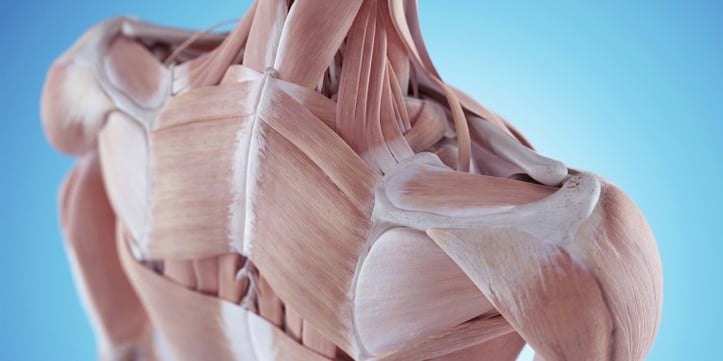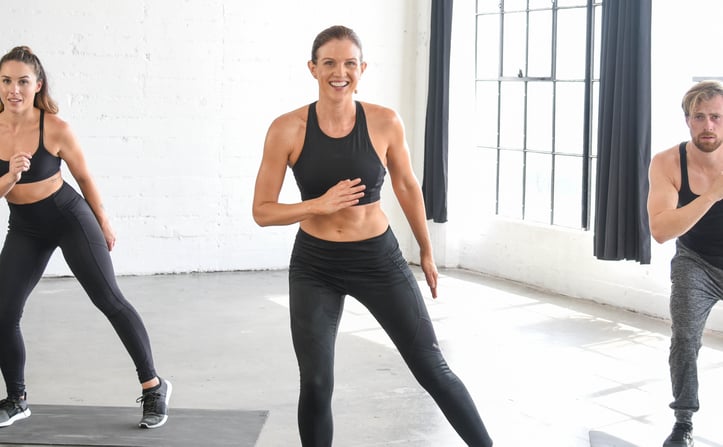
The Kinetic Chain: Your Secret Weapon for Stronger, Safer Workouts
If you’ve ever wondered why some exercises leave you feeling more 'connected' to your movement while others feel isolated, the answer lies in the kinetic chain—a foundational concept in exercise science that’s often overlooked but critical to maximizing results and avoiding injury.
What Is the Kinetic Chain?
The kinetic chain refers to the interconnected system of bones, joints, muscles, and connective tissues that work together to produce movement. Think of it as your body’s 'movement highway'—when one segment (like your foot, knee, or hip) is out of alignment, it creates traffic jams (imbalances) that affect the entire chain.
There are two primary types:
- Closed Kinetic Chain (CKC): The distal segment (e.g., hands or feet) is fixed to a surface (e.g., squats, push-ups). Your body moves over the fixed point, engaging multiple muscle groups and joints simultaneously.
- Open Kinetic Chain (OKC): The distal segment is free to move (e.g., leg extensions, bicep curls). This isolates a single joint/muscle group, ideal for targeted strength.
Why it matters: NASM (National Academy of Sports Medicine) notes that CKC exercises mimic real-world movements (like lifting groceries or climbing stairs), making them superior for building functional strength. Meanwhile, OKC exercises are useful for rehab or correcting muscle imbalances—but only when paired with CKC work.
Science-Backed Benefits of Mastering the Kinetic Chain
- Reduced Injury Risk: A 2021 study in the Journal of Strength and Conditioning Research found that CKC exercises (like the deadlift) produce more stable joint loading compared to OKC moves, lowering stress on knees and shoulders.
- Better Muscle Coordination: ACE (American Council on Exercise) reports that CKC movements activate 30-40% more muscle fibers than isolated OKC exercises, improving neuromuscular efficiency.
- Functional Strength: Ever tried a single-leg deadlift? It forces your core, glutes, and hamstrings to collaborate—exactly how your body works during daily tasks.
How to Apply the Kinetic Chain in Your Routine
For Beginners: Start with CKC exercises to build a foundation of stability and coordination.
- Example: Bodyweight squats (focus on keeping your knees tracking over your toes to engage the entire leg chain).
- Pro Tip: Add a band around your knees to emphasize glute activation—this trains your hips to work with your knees, not against them.
For Intermediate/Advanced: Mix CKC and OKC for balance.
- Example: Pair barbell back squats (CKC) with leg curls (OKC) to strengthen both the 'push' (quads) and 'pull' (hamstrings) sides of your leg chain.
- Game Changer: Try a 'chain-focused' circuit: 10 push-ups (CKC chest/shoulders) → 12 lateral lunges (CKC legs) → 15 tricep dips (CKC arms). This cycles through different chains to boost full-body synergy.
For Rehab or Imbalances: Use OKC exercises strategically. If you have weak glutes, try clamshells (OKC) to isolate the gluteus medius—but follow with bridges (CKC) to integrate that strength into functional movement.
Common Mistake to Avoid: Over-Reliance on OKC
Many gym-goers fixate on bicep curls or leg extensions (OKC) for 'show muscles,' but neglect CKC work. This creates 'island muscles'—strong in isolation but weak when needed for real movement. Imagine a sprinter with strong quads but weak glutes: They’ll struggle to push off the ground efficiently (and risk knee pain).
Your Action Step: Audit Your Next Workout
Before your next session, ask: Does this exercise mimic a real-life movement? If not, pair it with a CKC counterpart. For example, if you’re doing bicep curls (OKC), add farmer’s carries (CKC) to train your arms and core together.
By honoring your body’s kinetic chain, you’re not just building strength—you’re building resilience. Ready to move smarter, not harder? Start with one CKC exercise today, and feel the difference in your form, performance, and long-term health.
Let your body’s movement highway flow freely—no traffic jams allowed.

Fit vs Fat: Decoding Health's True Ruler

Pump Up Your Heart: Science-Driven Weight Loss

Wellness Technology: Your Path to Sustainable Weight Loss

A Sensible Guide to Dietary New Year's Resolutions

Prevent Shoulder and Rotator Cuff Injuries with Corrective Exercises

Overcome Fitness Plateaus: 4 Tips for Success

10 x 10 Thanksgiving Day Circuit: A Fitness Guide

Unleash Your Fitness Potential with Kit Rich's Training Secrets

The Future of Fitness: A Guide for Beginners to Intermediates

